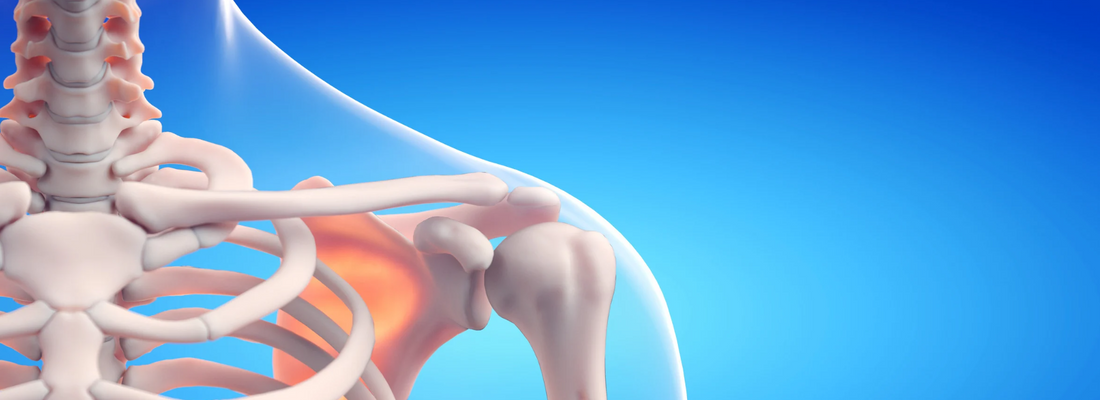
Pickleball and Bone Health: Why This Sport is a Win for Your Skeletal System
Share
Pickleball may be beloved for its quick rallies, communal energy, and low learning curve, but beneath its fun-first surface lies a powerful health benefit often overlooked: bone strength. While many people turn to weights or resistance training to support their skeletal system, few realize that pickleball—yes, your favorite paddle sport—is an unexpected ally in building and preserving bone density.
This article explores how pickleball supports skeletal health across age groups, why it’s particularly valuable in preventing age-related bone loss, and how to approach the game in a way that maximizes its structural benefits without inviting injury.
Whether you're playing on a full-size regulation court, improvising with a backyard court layout, or drilling in your indoor court setup, each session is a step toward stronger bones and a more resilient body.
Understanding Bone Health: The Framework of Longevity
Your skeletal system isn’t just scaffolding, it’s a living, adaptive tissue that constantly remodels itself in response to stress. Weight-bearing activity is crucial for maintaining bone density, especially as we age. Without adequate stimulation, bones weaken, increasing the risk of fractures and osteoporosis.
Key components of bone health include:
- Mechanical loading (resistance through movement and impact)
- Calcium absorption (supported by exercise-induced circulation)
- Hormonal stimulation (including growth hormone triggered by activity)
Pickleball provides all three, wrapped in a game you actually look forward to playing.
Why Pickleball is Bone-Friendly by Design
Pickleball strikes a balance few sports manage. It’s physically demanding enough to strengthen bones but not so intense that it deters participation or increases injury risk for older players.
Bone health benefits of pickleball include:
1. Weight-Bearing Movements
Running, shuffling, and quick directional changes apply mechanical load to bones in the legs, hips, and spine, encouraging bone remodeling and mineral retention.
2. Multi-Planar Motion
Unlike treadmill walking or cycling, pickleball requires lateral, forward, and backward movement, which engages a broader range of musculoskeletal tissues. This variation is crucial for evenly stimulating bone density.
3. Natural Resistance Training
While not lifting dumbbells, players are constantly engaging muscles to accelerate, decelerate, and stabilize. This muscular engagement, especially in the lower body and core, creates tension on the bones—exactly the kind of stress bones need to stay strong.
4. Frequent Start-and-Stop Dynamics
The stop-and-go nature of pickleball mimics plyometric loading, which is highly effective for bone stimulation without the high impact of jumping sports.
5. Mind-Body Connection
Neuromuscular coordination improves balance, helping prevent falls—a major cause of fractures in aging populations.
Pickleball for Osteopenia and Osteoporosis
For those already diagnosed with reduced bone density, pickleball is a viable, safe, and enjoyable intervention. Its low-impact movements minimize fracture risk while still challenging the skeletal system.
Safety Tips for At-Risk Players:
- Play on forgiving surfaces such as wood, sport tiles, or cushioned indoor courts
- Use proper footwear to prevent slips and maintain joint alignment
- Begin with short sessions and gradually increase court time
- Prioritize form and posture over speed or power
Whether you're in a formal league or just volleying in your indoor court setup, consistent play can help halt or even reverse early-stage bone loss.
The Role of Consistency in Skeletal Adaptation
Bones respond to regular, repeated stress. Sporadic bursts of activity are less effective than moderate, frequent play.
For optimal skeletal benefit:
- Aim for 3 to 5 sessions per week
- Combine pickleball with strength training for holistic bone support
- Include balance exercises to further reduce fall risk
- Maintain a diet rich in calcium and vitamin D to support the remodeling process
If you're using a backyard court layout, the convenience of at-home play makes it easier to stay consistent—rain or shine, tournament or training day.
Building Bone Health at Any Age
While the benefits of pickleball for aging adults are clear, younger players shouldn't overlook its preventative value. Bone density typically peaks by age 30, meaning every rally, sprint, and serve contributes to your long-term skeletal resilience.
Playing pickleball during these foundational years sets the stage for stronger bones later in life. For families playing together, it’s a multigenerational investment in joint mobility, bone strength, and movement literacy.
Final Thoughts: Strength from the Inside Out
Pickleball isn’t just fun—it’s functional. Behind every well-placed dink and forehand drive lies a symphony of joint motion, muscular engagement, and bone stimulation. With each match, your skeletal system becomes more robust, more resilient, and more capable of supporting a full, active life.
Whether you’re setting up your court in a gymnasium, driveway, or customized backyard court layout, you’re doing more than chasing a ball. You’re reinforcing the framework that supports your every move.
Pickleball is more than a pastime. It’s a prescription for stronger bones and a stronger you.












